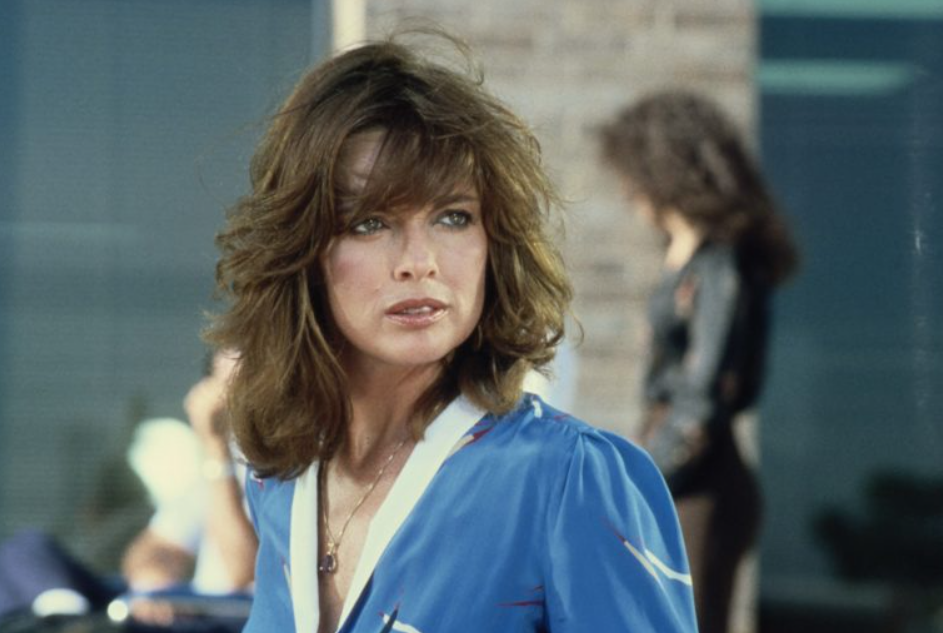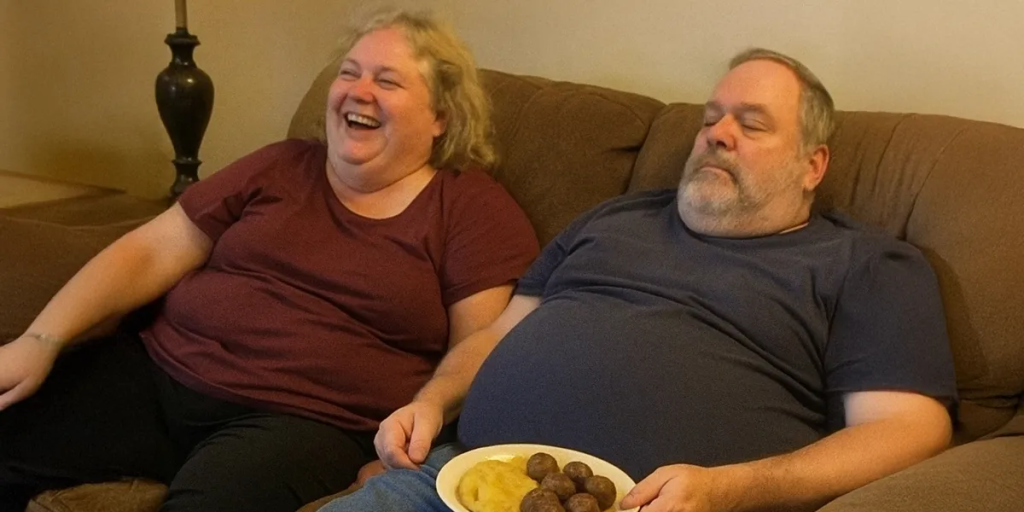
Linda Gray became a household name thanks to her role as Sue Ellen Ewing on the beloved soap opera Dallas. Over the course of more than 300 episodes, she not only showcased her incredible talent but also faced numerous personal challenges along the way. Today, at 84 years old, Gray continues to shine.
Throughout the history of film and television, we have witnessed remarkable performances by countless actors. Some portrayals resonate so deeply that it’s hard to imagine anyone else in the role. For instance, who could envision Little House on the Prairie without Michael Landon as Charles Ingalls or Mary Poppins without Dick Van Dyke as Bert? Similarly, Linda Gray’s portrayal of Sue Ellen is irreplaceable, and fans of the show are grateful she was cast in such a pivotal role.

Gray’s life has been nothing short of extraordinary, resembling a roller coaster filled with ups and downs. She has confronted life-threatening illnesses, addiction, and a challenging marriage. Despite these adversities, she has always emerged stronger, committed to making the most of her life and career.
Starring alongside Larry Hagman and Patrick Duffy on Dallas, Gray recently opened up about her experiences working with Hagman and the dynamic chemistry they shared on set.

Born on September 12, 1940, in Santa Monica, California, Gray faced a significant challenge in her childhood when she was diagnosed with polio. Her grandfather had also contracted the virus, leaving her family in distress. However, Linda maintained a surprisingly optimistic outlook during her own diagnosis. “They didn’t know what it was when he was 17, and he was always in a wheelchair”, she recalled. “When I was diagnosed, everyone went crazy in my family, but I wasn’t. I thought I could have a wheelchair like Grandpa.”
Growing up in Culver City, California, where her father owned a watchmaker shop, Linda was drawn to the performing arts from a young age. She often entertained her neighbors and even starred as Cinderella in a school production at Notre Dame Academy in Los Angeles.

While her father provided a stable presence, he was emotionally distant. As Gray noted in her 2015 memoir, The Road to Happiness Is Always Under Construction, “He was just kind of there, like a piece of furniture”, and emotional discussions were off-limits. In contrast, her mother, Marge, a former artist and ballerina, struggled with alcoholism, leaving Linda and her sister to take charge of the household. “She wasn’t mean, she was just blurred, in her own world”, Gray wrote. This upbringing inspired Linda to pursue a different path, determined to avoid her mother’s fate.

With dreams of a career in medicine initially, Gray soon shifted her focus to acting, influenced by the Hollywood landscape surrounding her. She spent her teenage years modeling for various companies and airlines.
At 21, Linda married photographer Edward Lee Thrasher, but the marriage became a struggle. Her aspirations took a backseat as she became a wife and mother, welcoming son Jeff in 1960 and daughter Kehly six years later. Linda felt emotionally neglected, describing the marriage as “cold” and ultimately deciding to leave after 21 years.
Despite her husband’s disapproval of her pursuing acting, Gray took the plunge and began landing television commercials. She had minor roles in films like Under the Yum Yum Tree and Palm Springs Weekend but hit the jackpot when, at 27, she became Anne Bancroft’s body double for The Graduate poster (1967). Ironically, she later portrayed Mrs. Robinson in a 2001 stage adaptation of the same film.

In her memoir, Gray also shared a humorous rejection letter from Glamour magazine she received in the early 1960s, which she kept as a reminder of resilience. “It kicked me from behind, and made me want to go and do something”, she said.
Though she loved motherhood, the lack of a fulfilling career frustrated her. When she finally enrolled in acting classes, her husband dismissed the idea, suggesting she wait until their children were older. At 37, she forged ahead and trained alongside younger actors. It wasn’t long before she secured her first significant role as a guest star on Marcus Welby, M.D. in 1974.

The turning point came in 1978 when Gray was cast as Sue Ellen Ewing on Dallas. Initially meant to be a recurring role for just five episodes, her performance resonated with audiences and critics alike, leading to her becoming a series regular and turning her into a star.

Dallas, set against the backdrop of family rivalry and scandal at Southfork Ranch, showcased Gray’s exceptional talent. Her chemistry with Larry Hagman was palpable, but she clarified that it stemmed from a sibling-like bond. “He was the bad big brother that I never had”, she explained. Their dynamic translated beautifully on-screen, captivating both the network executives and viewers alike.

The show broke numerous viewing records, becoming one of the most-watched television series in history. The iconic episode revealing who shot J.R. Ewing drew an estimated 80 million viewers, a record that stood until surpassed by MASH*.
For her role, Gray received two Golden Globe nominations and an Emmy nomination for Outstanding Lead Actress. After divorcing Ed Thrasher in 1983, her son Jeff pursued a career in directing and earned an Emmy nomination in 2018. Tragically, he passed away in 2020 after battling leukemia. Gray honored him on Instagram, celebrating his life and the love he shared with those around him.

Throughout her tenure on Dallas, Gray appeared in 308 episodes. Following the show’s conclusion, she continued to work in television and reprised her role as Sue Ellen in the 2012 revival of Dallas, which aired for two seasons. She received a Special Award at the 2014 USA Film Festival, further cementing her legacy.
Now, at 84, Linda Gray remains as stunning as ever. She has navigated many challenges, from her childhood struggles to her difficult marriage and the loss of her son. Through it all, she has learned to transform adversity into resilience.
We admire her strength and wish her continued success in the years to come! Feel free to share this inspiring story with your family and friends.
My Daughter’s In-Laws Took the Money I Sent Her & Treated Her Like the Maid—I Made Sure They Knew It Was a Big Mistake

When I gifted my daughter a house and car for her new life, I never imagined her in-laws would claim it all—and reduce her to their unpaid maid. They crossed a line, and I made sure they’d never forget who really held the keys.
I missed my only daughter’s wedding.

A sad woman | Source: Pexels
I was recovering from surgery abroad. I begged my doctor to let me fly, but he said, “You’re lucky to be standing. Don’t push it.” My heart broke when I saw the pictures from the wedding — Ava in white, her smile so wide it made me cry.
But I couldn’t be there.

A crying woman | Source: Pexels
I wanted to give her something big. Something that showed I was still with her, even from far away. So, I bought her and her husband, Jacob, a house. Not just helped with it — bought it outright.
Same with the car. A little gray SUV. Good for groceries, work, or weekend trips.

A gray SUV | Source: Pexels
Everything was done legally. The house was in my name. So was the car. I trusted them, but life can be strange. It’s easier to gift something later than to get it back once it’s gone.
Once I was well enough, I booked a flight and packed my bags. I couldn’t wait to see her. To hug her. To see her life as a wife. I didn’t tell her I was coming. I wanted it to be a surprise.

A woman sitting on a suitcase | Source: Pexels
But nothing could have prepared me for what I saw.
I let myself in with the key Ava had sent me months ago. The house was quiet. Then I heard something from the kitchen — a soft scrubbing sound.
There she was. My Ava. On her knees. Scrubbing the floor with a bucket and sponge. Her hair was tied back. Her face looked pale.

A woman scrubbing floors | Source: Freepik
In the living room, on the couch, sat Charles and Linda — her in-laws. They were eating lunch, watching TV.
Linda didn’t even look up. “Don’t forget the hallway this time,” she said, chewing loudly.
“Yeah,” Charles added. “This plate’s still dirty. Wash it again.”
I stood there frozen.
Ava saw me and gasped. “Mom? What are you doing here?”
“I wanted to surprise you,” I said softly.

A smiling woman with open arms | Source: Freepik
She got up fast and wiped her hands on her pants. “Let’s talk later, okay? Just… not now.”
Charles glanced at me. “Oh. You must be the mother.”
Linda smiled, tight-lipped. “Nice of you to drop by.”
I didn’t answer. I just watched.
Dinner that night felt like a quiet ache in my chest.

A family dinner | Source: Pexels
Ava moved through the kitchen with tired grace, stirring the pot, flipping the meat, setting the table. She did it all alone, without a word from anyone else. Charles stayed on the couch, glued to the TV, while Linda sat near the window, scrolling through her phone and humming softly to herself.
“It smells a little burnt,” Linda muttered, not even bothering to glance up.
Ava carried the plates over and softly called, “Dinner’s ready.”

A woman setting the table | Source: Pexels
Charles didn’t move. “Bring it here,” he said. “I’m in the middle of something.”
She obeyed without complaint, walking back and forth between the kitchen and the couch. No one said thank you.
Linda took one bite and shook her head. “Too dry. Did you cook this too long?”
Charles grunted. “Needs salt.”
Ava smiled faintly and nodded. “I’ll do better next time.”

A mature woman with her arms folded | Source: Pexels
I watched her carefully. Her hands moved out of habit, her eyes dull with exhaustion. When the meal ended, she quietly cleared the plates and started washing dishes. Not a soul offered to help.
I walked up beside her. “Why are you doing everything?” I asked softly.
She didn’t stop scrubbing. “They’re just staying for a while. It’s temporary.”
“How long has it been?”

A woman washing the dishes | Source: Pexels
She paused. “Since the wedding.”
“And they think Jacob bought the house?”
Ava glanced at me, then looked down. “Yes. I didn’t correct them. It just seemed easier that way.”
I took a deep breath. “Easier for who, sweetheart?”
She didn’t answer.

A sad woman looking to her side | Source: Pexels
That night, I couldn’t sleep. I lay awake, listening to the stillness of the house. My mind kept playing it over — Ava running herself ragged, while Charles and Linda lived like royalty in a home they thought was theirs.
She tiptoed around them like a guest in her own life.

A woman sleeping in her bed | Source: Midjourney
The next morning, I stood at the front window and looked out at the car in the driveway. It was spotless. Not a smudge on the paint. It looked like it hadn’t missed a single outing.
Ava walked by with a basket of laundry, her hair tied back, sleeves rolled up. “Do you ever drive it?” I asked.
She shook her head. “No. They use it. I don’t really go anywhere anymore. I don’t have time.”

A woman doing laundry | Source: Pexels
That simple sentence hit me like a stone.
They had taken more than just her space. They had taken her freedom. Her voice. Her joy. I saw it now — how small she’d become in her own home, trying not to offend, trying to keep the peace.

A sad mature woman looking down | Source: Freepik
And Jacob? He was away on another work trip, unaware or unwilling to see what was happening under his own roof. Maybe he didn’t know. Maybe Ava didn’t tell him. Or maybe she thought it wasn’t worth the trouble.
I looked at my daughter — pale, quiet, too polite to ask for more — and I knew I couldn’t leave things the way they were.
Something had to change.

A tired woman holding her head | Source: Pexels
Later that afternoon, I asked everyone to come into the kitchen. Charles shuffled in, remote still in hand. Linda followed, sighing as she sat and crossed her legs.
“What is this, a meeting now?” she said with a smirk.
Ava glanced at me, worried. “Mom?”
I straightened my back. “Yes. A house meeting.”
My voice was steady. My mind was made up. I took a breath and began.

A serious woman in her living room | Source: Freepik
“I’ve been here for two days,” I said calmly. “And I’ve watched my daughter do every bit of cooking, cleaning, laundry, and driving. While the two of you relax like you’re on vacation.”
Linda let out a dry laugh. “We’re guests. We don’t follow housemaid schedules.”
I didn’t blink. “You’re not guests. You’ve been living here for months. Eating, showering, doing laundry, using the car — all without lifting a finger.”
Charles shifted in his chair. “What’s your point?”

A serious mature man | Source: Pexels
“My point,” I said, “is simple. If you live in this house, you contribute. Ava is not your maid.”
Linda rolled her eyes. “You can’t just come in here and change the rules. This is Jacob’s house. Not yours.”
I paused for a moment, then looked her dead in the eye.
“No. It’s not Jacob’s house,” I said. “It’s mine.”
They both froze.

A smiling woman touching her lips | Source: Pexels
“What are you talking about?” Charles asked, his voice rising.
“I bought this house. The deed is in my name. I also bought the car. It’s registered to me.”
Linda’s mouth opened, then closed. Her face turned a shade of red I hadn’t seen before.
“You’re joking,” she finally said.
“I’m not,” I replied. “This house was a gift for Ava — something I wanted her to enjoy when the time was right. But legally, it still belongs to me.”

A mature woman looking to her side | Source: Freepik
Linda took a step forward. “We have nowhere else to go! You can’t just kick us out!”
I looked at her, calm as ever. “That’s not Ava’s responsibility. Or mine.”
“But we’re family—”
“No,” I interrupted. “You’re extended family, not royalty. If you want to stay, you pull your weight. If not, you can pack your things and go.”
Silence fell. You could hear the hum of the refrigerator.

An angry mature woman pointing at the camera | Source: Freepik
Ava stood frozen, lips parted.
I turned to her and softened my tone. “Sweetheart, you deserve better than this. This is your home. And it’s time you lived in it like it is.”
Ava swallowed hard. Her eyes brimmed with tears. Then, barely above a whisper, she said, “Thank you.”
That was enough.

A smiling young woman | Source: Freepik
Within the week, Charles and Linda packed up and left. No big farewell. Just a slammed door and the sound of tires on gravel.
Ava collapsed into my arms that evening, her body shaking. “I didn’t know how to say no,” she cried.
“You don’t have to explain,” I said, holding her tight. “You were trying to keep the peace. But peace isn’t peace if it costs you everything.”

A woman drinking tea with her daughter | Source: Pexels
We spent the next few days reclaiming her space. We rearranged the furniture, cleaned the closets, and opened every window in the house. Sunlight poured in. Ava laughed more. She moved easier. She started humming while making coffee.
On Saturday, I tossed her the keys. “Let’s take that car for a spin.”
We drove with the windows down, wind in our hair, music playing loud. For the first time in months, I saw her smile without effort.

A happy woman driving | Source: Pexels
That night, as we sat in the quiet living room, she rested her head on my shoulder.
“I forgot what it felt like to be me,” she whispered.
I kissed the top of her head.
She’s not a maid. She’s not a servant. She’s my daughter. And no one gets to forget that.

A woman hugging her mother | Source: Pexels



Leave a Reply